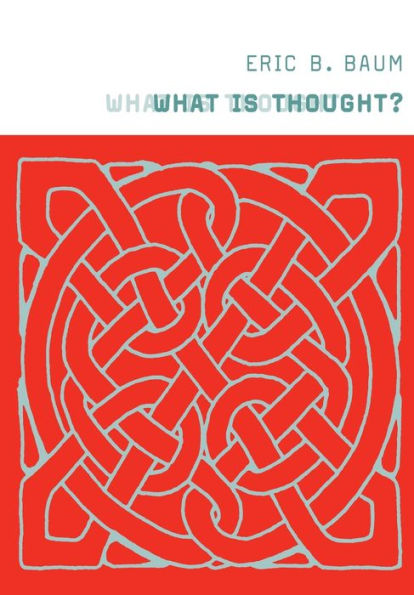

Paperback(Revised ed.)
-
PICK UP IN STORECheck Availability at Nearby Stores
Available within 2 business hours
Related collections and offers
Overview
Baum proposes that underlying mind is a complex but compact program that corresponds to the underlying structure of the world. He argues further that the mind is essentially programmed by DNA. We learn more rapidly than computer scientists have so far been able to explain because the DNA code has programmed the mind to deal only with meaningful possibilities. Thus the mind understands by exploiting semantics, or meaning, for the purposes of computation; constraints are built in so that although there are myriad possibilities, only a few make sense. Evolution discovered corresponding subroutines or shortcuts to speed up its processes and to construct creatures whose survival depends on making the right choice quickly. Baum argues that the structure and nature of thought, meaning, sensation, and consciousness therefore arise naturally from the evolution of programs that exploit the compact structure of the world.

Product Details
| ISBN-13: | 9780262524575 |
|---|---|
| Publisher: | MIT Press |
| Publication date: | 01/20/2006 |
| Series: | A Bradford Book |
| Edition description: | Revised ed. |
| Pages: | 494 |
| Product dimensions: | 6.69(w) x 9.60(h) x (d) |
| Age Range: | 18 Years |
About the Author
What People are Saying About This
Eric Baum's book is a remarkable achievement. He presents a novel thesis—that the mind is a program whose components are semantically meaningful modules—and explores it with a rich array of evidence drawn from a variety of fields. Baum's argument depends on much of the intellectual core of computer science, and as a result the book can also serve as a short course in computer science for non-specialists. To top it off, What is Thought? is beautifully written and will be at least as clear and accessible to the intelligent lay public as Scientific American.
In his enjoyable and informative book The Evolution of Morality, Richard Joyce distinguishes between explaining how natural selection might explain socially useful behavior in animals and what more is needed to explain morality, with its thoughts about right or wrong, in human beings. Contrary to what others have said, Joyce argues plausibly that, to the extent that our moral concepts and opinions are the results of natural selection, there is no rational basis for these concepts and opinions.
In his enjoyable and informative book The Evolution of Morality, Richard Joyce distinguishes between explaining how natural selection might explain socially useful behavior in animals and what more is needed to explain morality, with its thoughts about right or wrong, in human beings. Contrary to what others have said, Joyce argues plausibly that, to the extent that our moral concepts and opinions are the results of natural selection, there is no rational basis for these concepts and opinions.
—Gilbert Harman, Department of Philosophy, Princeton University
There is no problem more important, or more daunting, than discovering the structure and processes behind human thought. What is Thought? is an important step towards finding the answer. A concise summary of the progress and pitfalls to date gives the reader the context necessary to appreciate Baum's important insights into the nature of cognition.
—Nathan Myhrvold, Managing Director, Intellectual Ventures, and former Chief Technology Officer, MicrosoftA major work. Berger offers an elegant examination of issues that have been in controversy for the last forty years and that have been and are being discussed by the best philosophers of language. But where others have tended to offer piecemeal solutions, Berger offers a unified account based on a small set of principles.
—Gilbert Harman, Department of Philosophy, Princeton UniversityThere is no problem more important, or more daunting, than discovering the structure and processes behind human thought. What is Thought? is an important step towards finding the answer. A concise summary of the progress and pitfalls to date gives the reader the context necessary to appreciate Baum's important insights into the nature of cognition.
